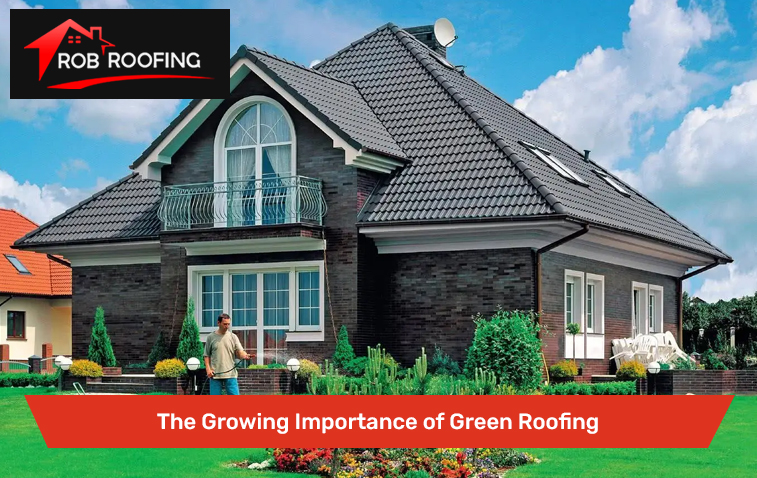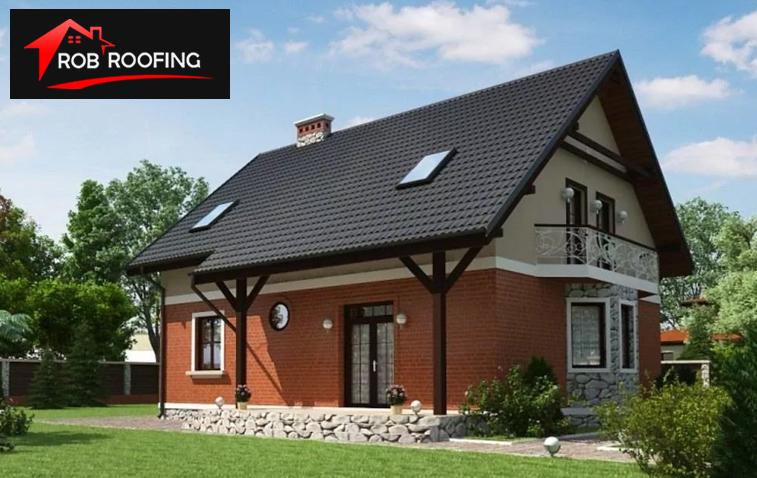The Growing Importance of Green Roofing: Benefits for Urban and Rural Properties
As the world grapples with environmental challenges, the concept of sustainability has become increasingly important in various aspects of our lives, including architecture and construction. Among the innovative solutions gaining traction is green roofing—a practice that involves the installation of vegetation and soil on building rooftops. Green roofing offer a plethora of benefits that extend beyond aesthetic appeal, contributing to environmental sustainability, energy efficiency, and improved quality of life.
Whether in urban or rural settings, green roofs are emerging as a vital component of modern building design, offering tangible benefits to both the environment and property owners. Understanding the growing importance of green roofing can help property owners make informed decisions that contribute to a greener, more sustainable future.

Environmental Benefits of Green Roofing
One of the primary reasons for the growing popularity of green roofing is its positive impact on the environment. Green roofs provide numerous environmental benefits that are crucial in both urban and rural areas.
Improved Air Quality
Green roofs play a significant role in improving air quality by filtering pollutants and particulates from the air. The vegetation on green roofs absorbs carbon dioxide and releases oxygen, contributing to cleaner air. In urban areas, where air pollution is a major concern, green roofs can help reduce the concentration of harmful pollutants, leading to healthier living environments.
Enhanced Biodiversity
Green roofs provide habitats for various species of plants, insects, and birds, enhancing biodiversity in both urban and rural settings. In cities, where natural habitats are often limited, green roofs create new ecosystems that support local wildlife. In rural areas, green roofs can complement existing ecosystems, providing additional habitats and contributing to the preservation of native species.
Stormwater Management
One of the most significant environmental benefits of green roofing is its ability to manage stormwater runoff. Traditional roofs contribute to the problem of stormwater runoff, which can overwhelm drainage systems and lead to flooding. Green roofs absorb rainwater, reducing the volume of runoff and mitigating the risk of flooding. This is particularly important in urban areas with extensive impervious surfaces, but it also benefits rural properties by reducing erosion and protecting local waterways.
Implementation Tips:
- Select Native Plants: Choose native plants for your green roof to support local biodiversity and ensure the vegetation thrives in your specific climate.
- Regular Maintenance: While green roofs require less maintenance than traditional gardens, regular care is essential to keep the vegetation healthy and the roof functioning effectively.
- Watering Systems: Consider installing an irrigation system to ensure that your green roof receives adequate water, especially during dry periods.
Energy Efficiency and Cost Savings
Green roofs are not just good for the environment; they also offer significant energy efficiency benefits that can lead to substantial cost savings for property owners.
Temperature Regulation
Green roofs act as natural insulators, helping to regulate the temperature inside buildings. During the summer, the vegetation on green roofs absorbs sunlight, reducing the amount of heat that enters the building. This helps keep indoor spaces cooler, reducing the need for air conditioning. In the winter, green roofs provide additional insulation, helping to retain heat and reduce the need for heating. This natural temperature regulation leads to lower energy consumption and reduced utility bills.
Extended Roof Lifespan
Green roofs protect the underlying roofing materials from the elements, extending the lifespan of the roof. The vegetation and soil act as a barrier against UV radiation, temperature fluctuations, and physical damage. This protection can significantly reduce the wear and tear on the roof, leading to fewer repairs and replacements over time. As a result, property owners can save money on maintenance and prolong the life of their roofing investment.
Implementation Tips:
- Choose the Right Plants: Select plants that are well-suited to your climate and require minimal maintenance. Drought-tolerant and hardy species are ideal for green roofs.
- Layering System: Ensure that your green roof has a proper layering system, including a waterproof membrane, drainage layer, and growing medium. This system is crucial for the roof’s longevity and effectiveness.
- Monitor Energy Usage: Track your energy usage before and after installing a green roof to quantify the savings and understand the impact on your energy consumption.
Aesthetic and Social Benefits
Green roofs are not only functional but also enhance the aesthetic appeal of buildings. Additionally, they offer social benefits that contribute to the well-being of individuals and communities.
Enhanced Aesthetics
Green roofs transform the appearance of buildings, adding a touch of natural beauty to urban and rural landscapes. In urban areas, where greenery is often limited, green roofs create visual interest and soften the hard edges of concrete and steel structures. In rural settings, green roofs blend seamlessly with the natural environment, enhancing the overall harmony of the landscape.
Improved Quality of Life
Green roofs contribute to improved quality of life by providing green spaces that can be enjoyed by building occupants and the surrounding community. In urban areas, green roofs offer a respite from the hustle and bustle of city life, providing a peaceful retreat for relaxation and recreation. These spaces can be designed as rooftop gardens, accessible to residents or employees, offering opportunities for social interaction and connection with nature.
Noise Reduction
Green roofs also contribute to noise reduction, particularly in urban environments. The vegetation and soil on green roofs absorb sound, helping to reduce noise pollution from traffic, construction, and other urban activities. This can create a quieter, more peaceful environment for building occupants and neighboring properties.
Implementation Tips:
- Incorporate Seating Areas: If your green roof is accessible, consider incorporating seating areas, walkways, and even small gardens to create a functional and inviting space.
- Community Engagement: Involve the community in the design and maintenance of green roofs, especially in urban areas. This can foster a sense of ownership and pride in the shared space.
- Consider Aesthetic Design: Work with landscape architects to design a green roof that enhances the overall look of your property and aligns with your aesthetic preferences.
Environmental Impact in Urban Areas
Urban environments, with their dense populations and extensive development, face unique environmental challenges. Green roofs offer solutions that can mitigate some of these challenges and create more sustainable cities.

Urban Heat Island Effect
One of the major issues in urban areas is the urban heat island effect, where cities become significantly warmer than surrounding rural areas due to the concentration of buildings, roads, and other heat-absorbing surfaces. Green roofs help combat this effect by cooling the air through the process of evapotranspiration. The vegetation on green roofs absorbs sunlight and releases moisture into the air, reducing the ambient temperature and helping to cool the surrounding area.
Air Pollution Reduction
Urban areas often suffer from poor air quality due to vehicle emissions, industrial activities, and other sources of pollution. Green roofs help to mitigate air pollution by absorbing pollutants such as carbon dioxide, sulfur dioxide, and nitrogen oxides. The plants on green roofs act as natural air filters, improving the overall air quality in the city and contributing to a healthier living environment.
Stormwater Management in Cities
Stormwater management is a critical issue in urban areas, where impervious surfaces like roads and buildings prevent rainwater from being absorbed into the ground. This can lead to flooding, water pollution, and strain on municipal drainage systems. Green roofs absorb rainwater, reducing the volume of runoff and helping to manage stormwater more effectively. This not only reduces the risk of flooding but also helps to protect local waterways from pollution.
Implementation Tips:
- Promote Green Roofs in Urban Planning: Encourage the inclusion of green roofs in urban planning and development projects to maximize their environmental benefits.
- Educate the Public: Raise awareness about the environmental impact of green roofs and their role in creating more sustainable cities.
- Support Policy Initiatives: Advocate for policies that incentivize the installation of green roofs in urban areas, such as tax breaks or grants.
Environmental Impact in Rural Areas
While green roofs are often associated with urban environments, they also offer significant benefits for rural properties. These benefits contribute to the sustainability and resilience of rural communities.
Soil and Water Conservation
In rural areas, green roofs can play a role in soil and water conservation. By absorbing rainwater, green roofs reduce runoff and help prevent soil erosion. This is particularly important in agricultural areas, where soil conservation is critical for maintaining productive farmland. Green roofs also help to replenish groundwater supplies by allowing rainwater to slowly percolate through the soil.
Wildlife Habitat
Green roofs provide additional habitats for wildlife in rural areas, supporting biodiversity and contributing to the health of local ecosystems. The vegetation on green roofs can attract pollinators such as bees and butterflies, as well as birds and small mammals. This is especially valuable in rural areas where natural habitats may be threatened by development or agriculture.
Agricultural Applications
In some rural areas, green roofs are being used for agricultural purposes, such as growing fruits, vegetables, and herbs. These rooftop gardens can provide fresh, local produce, reduce the need for transportation, and contribute to food security in rural communities. Green roofs used for agriculture also offer educational opportunities, demonstrating sustainable farming practices and connecting people with the food they eat.
Implementation Tips:
- Adapt to Local Conditions: Design green roofs that are suited to the specific environmental conditions of your rural property, including climate, soil type, and local vegetation.
- Integrate with Agriculture: Consider integrating green roofs with other agricultural activities on your property, such as beekeeping or small-scale farming.
- Support Local Wildlife: Plant a variety of native species on your green roof to support local wildlife and contribute to the preservation of biodiversity.
Conclusion
The growing importance of green roofing is evident in both urban and rural settings. As environmental concerns continue to rise, green roofing offers a practical and sustainable solution that benefits property owners and the planet alike. From improving air quality and managing stormwater to enhancing energy efficiency and creating beautiful, functional spaces, green roofs are transforming the way we think about roofing and building design. Whether you live in a bustling city or a quiet rural area, investing in a green roof can provide long-term benefits that contribute to a healthier, more sustainable future.
